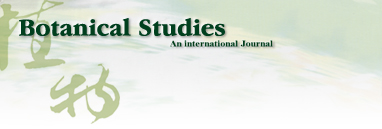| TITLE |
Observation of element distribution in potassium deficient barley (Hordeum vulgare L.) leaf by energy dispersive X-ray fluorescence analysis |
| AUTHOR |
M.Y. Miah
Department of Applied Biological Chemistry, Faculty of Agricultural Life Sciences, The University of Tokyo, Tokyo-113, Japan. Fax 81-3-5689-7226
M. Chino
Department of Applied Biological Chemistry, Faculty of Agricultural Life Sciences, The University of Tokyo, Tokyo-113, Japan. Fax 81-3-5689-7226 |
| FULL TEXT |
[in HTML format] [in PDF format]
|
| ABSTRACT |
An energy dispersive X-ray fluorescence (EDXRF) method for the qualitative analysis of calcium (Ca), chlorine (Cl), sulfur (S), phosphorus (P), silicon (Si), and magnesium (Mg) against potassium (K) in barley leaf is presented. Leaf samples associated with K deficiency symptoms were collected from standing barley plants grown on long term sewage sludge compost receiving plots. Then leaves were deep washed in deionized distilled water and dried by ironing. Dried barley leaf sample irradiation was accomplished with an X-ray obtained from an X-ray tube focused on an area of <100 Ám in diameter of the sample specimen surface. EDXRF provided sufficient sensitivity for relative concentrations of Ca, Cl, S, P, Si. The distribution pattern of Cl, P and S was homogeneous in the order Cl> S> P, based on the density of droplet integrals which were evenly distributed in the sample leaf. In contrast, the distribution pattern of Ca, K, and Si was categorized in the order Ca> K> Si, focused on vein visibility. However, no relationship existed between K distribution and its characteristics symptoms such as necrotic lesions. However, such lesions were fairly visible with Si distribution. Based on X-ray transmitted images of K deficient barley leaf for relative concentrations of Ca, Cl, S, P, Si, it was concluded that potassium deficiency does not affect the distribution in leaves of other elements needed for plant growth and development. |
| KEYWORD |
Barley; Mineral element; Potassium; X-ray fluorescence; |
| ARTICLE INFO |
Botanical Bulletin of Academia Sinica, Volume 40 Number 2 April 1999, page 135-140, 6 pages |
| PUBLISHER |
Institute of Plant and Microbial Biology, Academia Sinica, Taipei, Taiwan, Republic of China |

